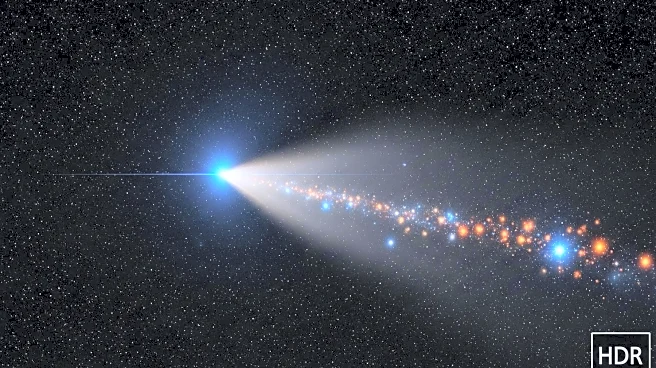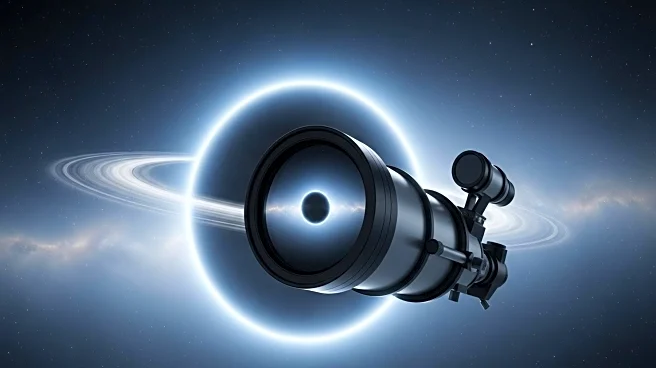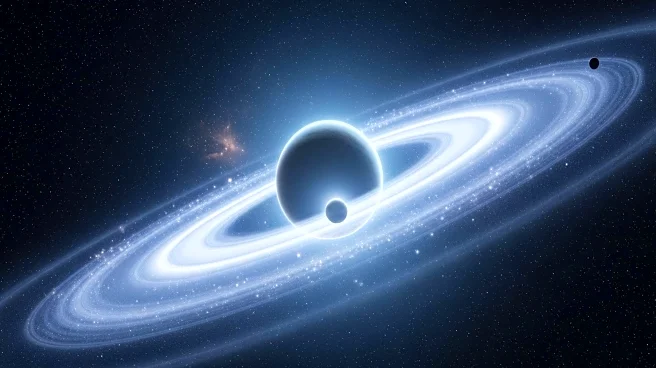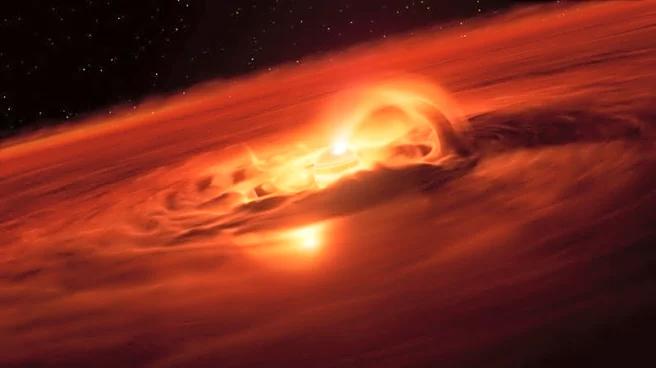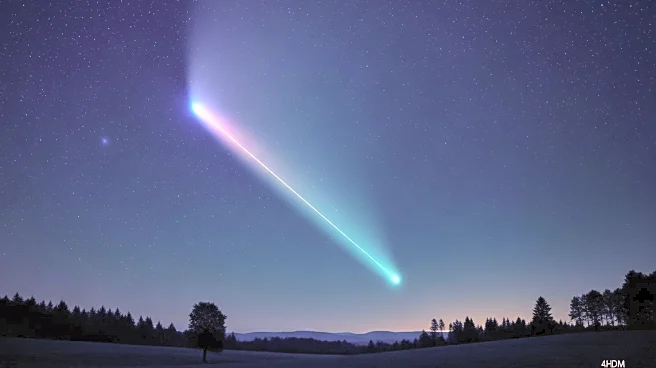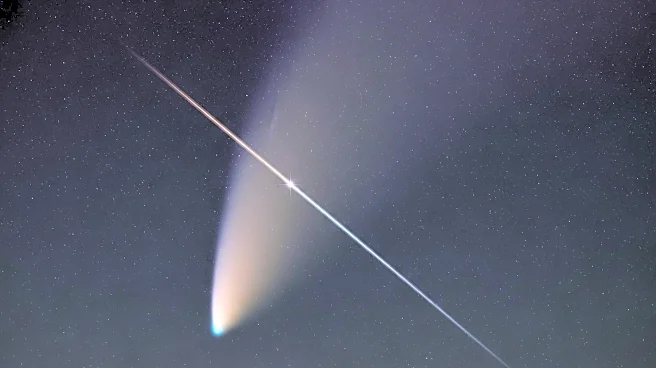What's Happening?
Astronomers have captured a groundbreaking image of a baby exoplanet, WISPIT 2b, forming within a protoplanetary disk around its parent star, WISPIT 2. This observation was made using the Magellan Telescope in Chile and the Large Binocular Telescope in Arizona. WISPIT 2b, a gas giant estimated to be five times more massive than Jupiter, is seen nestled inside a ring-shaped gap in the dusty disk, gathering material to grow into a fully realized planet. The image provides the first direct evidence of a growing planet within the very ring gap it is shaping, confirming predictions about gas giant formation. The protoplanetary disk functions as a birthplace for new planets, and gaps within these disks are believed to be created by growing planets scattering material outward.
Why It's Important?
This discovery is significant as it offers direct evidence supporting theories of planet formation, particularly for gas giants. Observing WISPIT 2b within the disk's gap provides insights into how planets accumulate mass and shape their surroundings. This finding enhances our understanding of planetary systems and their development, which is crucial for the broader field of astronomy and astrophysics. The ability to observe such phenomena helps refine models of planet formation and could influence future research and exploration strategies. It also underscores the capabilities of advanced telescopes and adaptive optics systems in capturing detailed cosmic events.
What's Next?
Further observations and studies are likely to focus on confirming the presence of additional forming planets within the protoplanetary disk, as suggested by the faint second source observed in another ring gap. Continued monitoring of WISPIT 2b's development will provide more data on the dynamics of planet formation and the interaction between forming planets and their surrounding material. These studies could lead to new discoveries about the conditions necessary for planet formation and the potential for similar processes in other star systems.
Beyond the Headlines
The observation of WISPIT 2b may have implications for understanding the formation of planetary systems similar to our own. It raises questions about the diversity of planetary formation processes and the potential for discovering habitable worlds. The ethical dimension involves the pursuit of knowledge about the universe, which can inspire future generations and drive technological advancements. Long-term, this research could contribute to the search for extraterrestrial life by identifying planets with conditions conducive to life.


